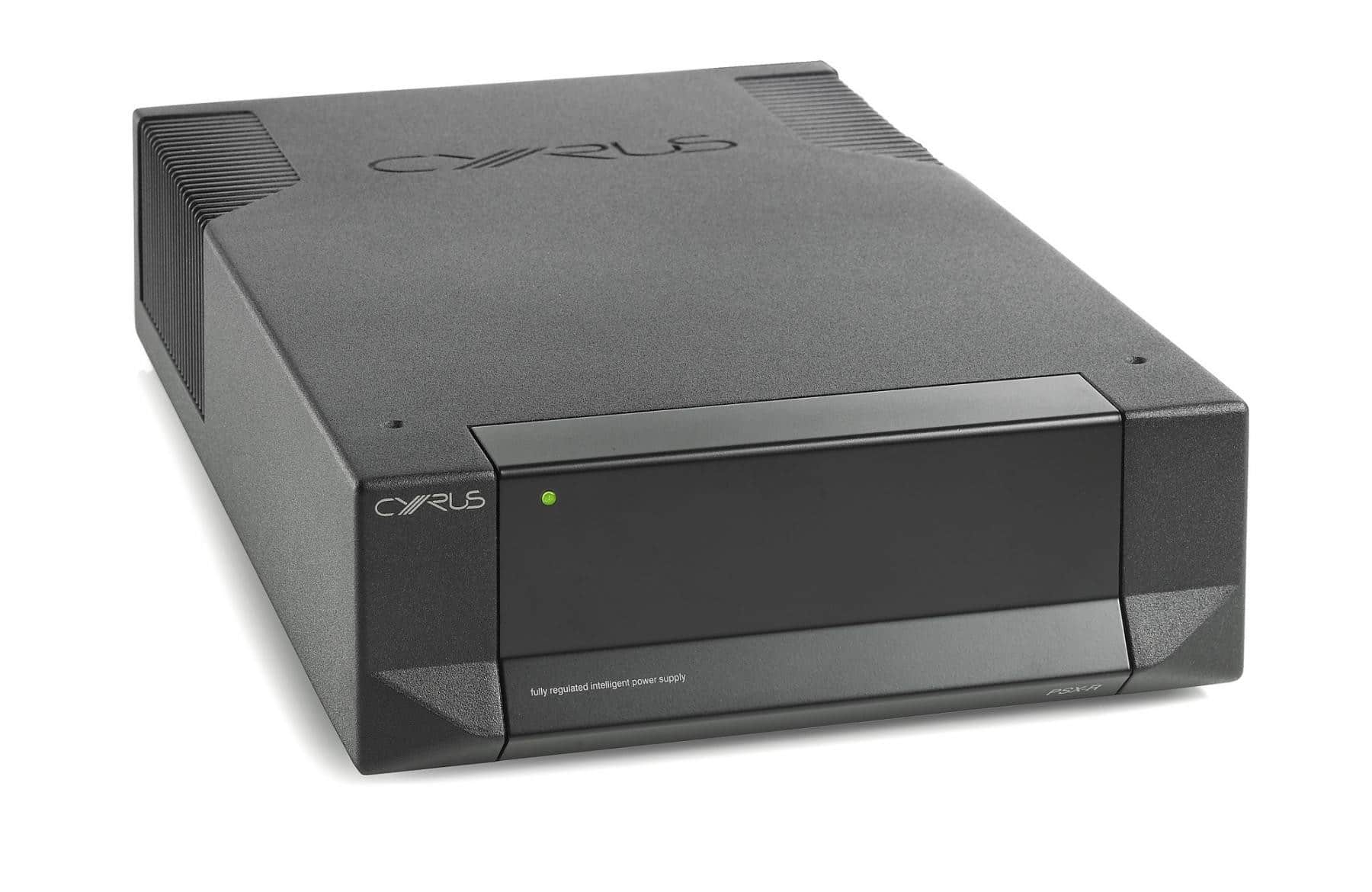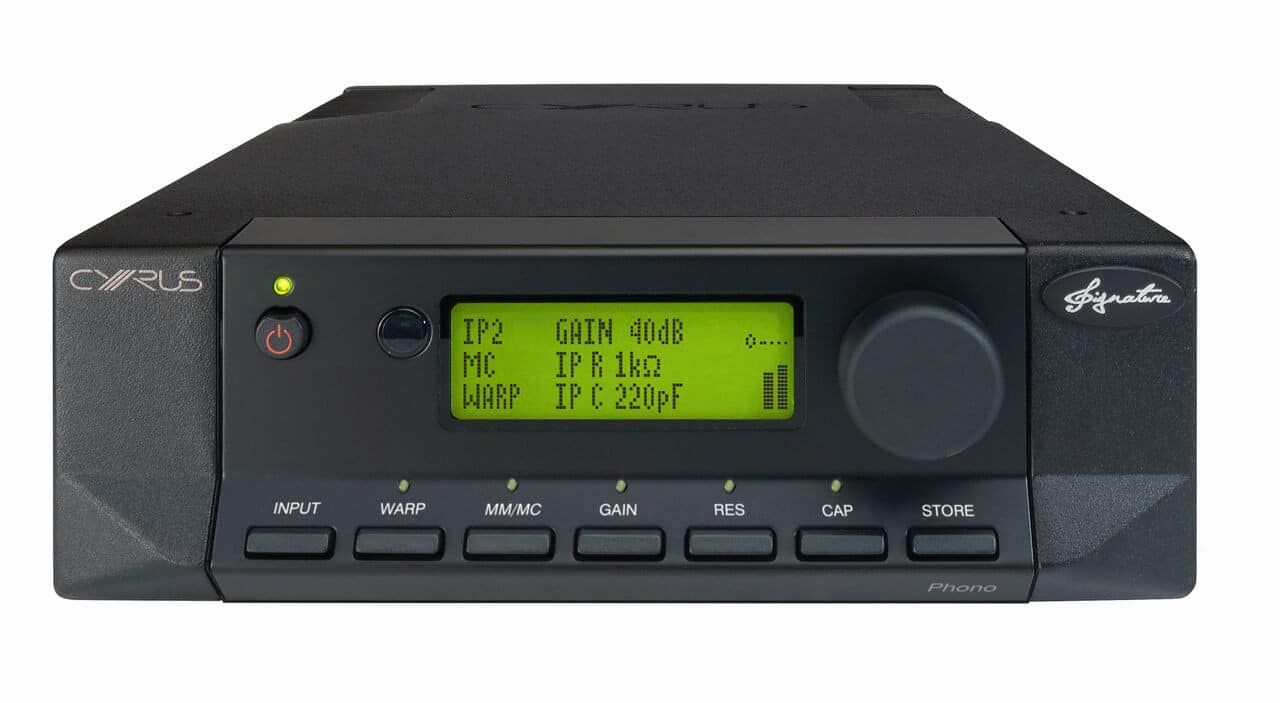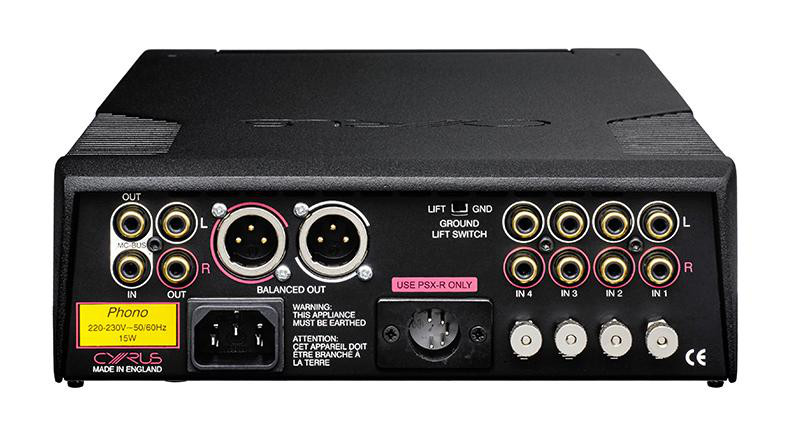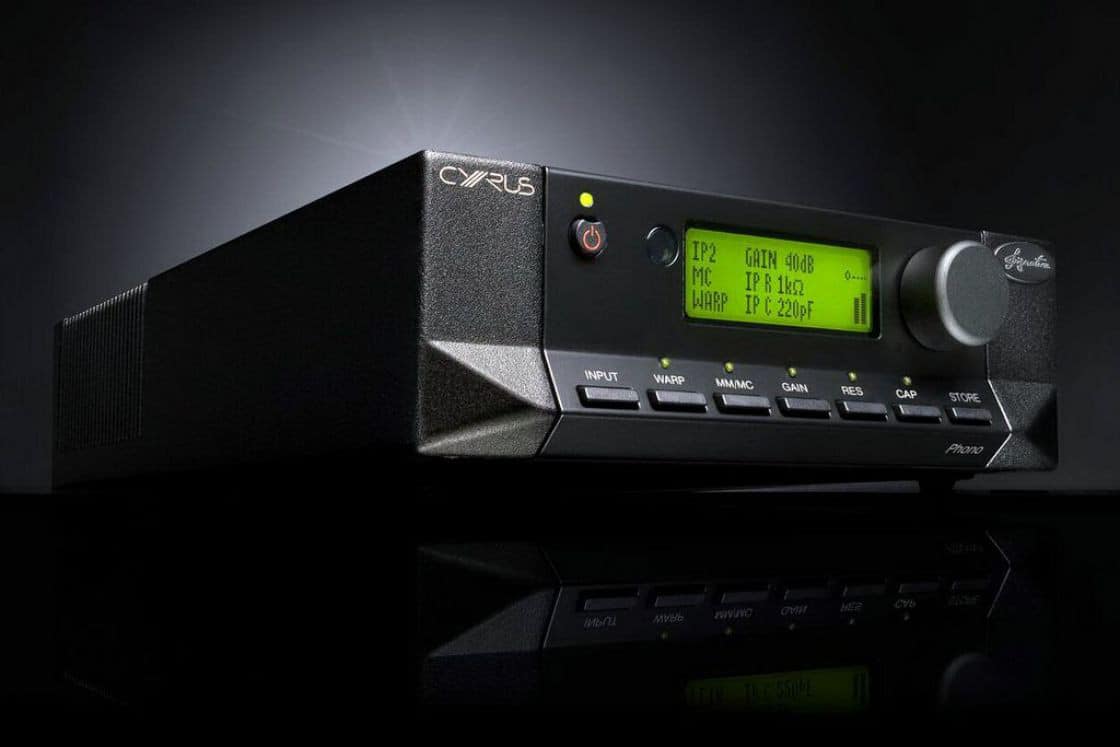The Article
Cyrus’ signature phono amplifier and PSX-R2 power supply
24th May 2016

Cyrus is offering a new phono amplifier that you can upgrade via a plug-in power module. Paul Rigby reviews the Phono Signature phono amplifier and the PSX-R2 external power supply
In the hi-fi world, the notion of being ‘separated’ or even ‘divorced’ is a good thing. At the very least, not talking to each other is smiled upon.
Hence, while integrated amplifiers are good, a split pre-amp from an accompanying power amplifier produces better sonics while separating the power amp is better still. It’s the same with phono amplifiers. The less chance of noise from one component infecting another area, the better for the resultant sound quality.
What Cyrus has done with the Signature phono amplifier, is to offer you the best of both worlds. Yes, you have a stand-alone and usable phono amplifier but, if you want to up the ante, the PSX-R2 is there to look after the separate power duties as a useful upgrade.
Spanning 73 x 215 x 360mm and weighing in at 4.1kg, the svelte Signature offers four pairs of inputs which means that you can run up to four turntables from this one box, useful if on a budget in cash or space terms. A pair of phono outputs and XLRs and a PSX-R2 port complete the array.
The front features seven input buttons, a rotary selector knob (this is not a volume control, so you cannot directly hook up the Signature to a power amplifier), standby button and display window. These controls allow you to select capacitance, resistance, gain, the warp filter and MM/MC select. Generally, I prefer this type of system to DIP switches but, within its genre, the Cyrus interface feels rather old fashioned and tired. In fact, every time I rotated the selector knob I expected to tune into the ghostly WW2-era BBC radio show, ’Workers Playtime’, emanating from the box. I’m being facetious, of course but that is the feel from this outmoded interface. The accompanying, clunky, pixellated, low-res window output is also small and takes some effort to understand.
A remote control with illuminated buttons completes the package.
Sitting within a similarly sized chassis but weighing in at a meaty 7kg is the PSX-R2. Featuring a 300V toroidal transformer, the PSX-R2 is a simple, no nonsense product, as it provides a power socket and rocker power switch on the rear with a built-in, 5-pin, umbilical chord output cable. The front sports a small standby light. That’s it.
To begin, I tested the stand-alone unit with a similarly priced Musical Surroundings Nova II phono amplifier. Once the power supply was added and the relative price rose, I utilised my Icon Audio PS3 as the reference.
SOUND QUALITY
I first played Sammy Davis Jr’s ‘The Candy Man’ from the original MGM pressing, ’Now’. The tale of a man in his mid-40s desperately trying to reconnect with ‘the kids’ during the hippie era and, it has to be said, largely succeeding (which is more than could be said for his friend, Frank Sinatra). Compared to the battery option of the Nova II, the Cyrus lost that slightly ethereal nature of the backing vocals and strings but did add an immediacy to the broad soundstage. Although not as relaxed in presentation terms and lacking a sense of ease, the Cyrus did retain a host of essential detail while minor elements, cymbals for example, were notably accentuated to enhance the available precision.
Switching to balanced outputs: gain had to be increased (from 60db to 70db) to achieve the reference volume but it did bring much of the naturalistic, almost ghostly nature of the background strings, back while the upper midrange offered a complex and tonally correct suite of harmonic vocals. Bass was both open and characterful while secondary percussion provided air and space.
Having established that balanced mode was the path to tread, I played Siouxsie And The Banshees’ Regal Zone from the original pressing of Join Hands. The Cyrus provided a low noise output but it also, with a rock source, offered a striking bass response. There was a real low blow attitude to the bass frequencies that added to the power and guts of the recording. Compared to my reference, it was also notable that both upper mids and treble had been slightly tweaked adding precision, especially in cymbal strikes and secondary precision while vocals were slightly more ‘in your face’.
It was at this point that I added the external power supply. First impression was of an immediate lowering of the noise floor which freed me to increase the gain. Bass was no more powerful but now featured extra information and detail within each drum strike. Upper midrange information included greater air and space with bountiful emotion engagement. Cymbal strikes were extended while the tambourine told you more about the initial body impact and guitar work was complex and intricate. The lead vocal, meanwhile wrapped itself in the reverb to extend a scarily intrusive nature to its delivery.
CONCLUSION
Despite the rather antiquated interface (it’s not a case of ‘if it ain’t broke’, it’s a case of better options being available, Cyrus needs to look into this immediately) the sound quality of the Signature is immediate, detailed and offers welcome delicacy in balanced mode while the external power supply is an essential upgrade when funds allow.
CYRUS PHONO SIGNATURE
Price: £1,200
Tel: 01480 410 900
Web: www.cyrusaudio.com
GOOD: detail, balanced output, flexibility, compact
BAD: aged interface
CYRUS PSX-R2
Price: £695
Tel: 01480 410 900
Web: www.cyrusaudio.com
GOOD: tonal realism, low noise floor, midrange extension
BAD: nothing at the price
RATING: 8
SYSTEM USED
EAT C-Sharp turntable
EAT C-Note arm
Koetsu Black cartridge
Icon Audio PS3 phonostage
Aesthetix Calypso pre-amp
Icon Audio MB 845 Mk.II monoblocks
Quad ESL-57 speakers with One Thing mods
Vertex AQ & Atlas cabling






